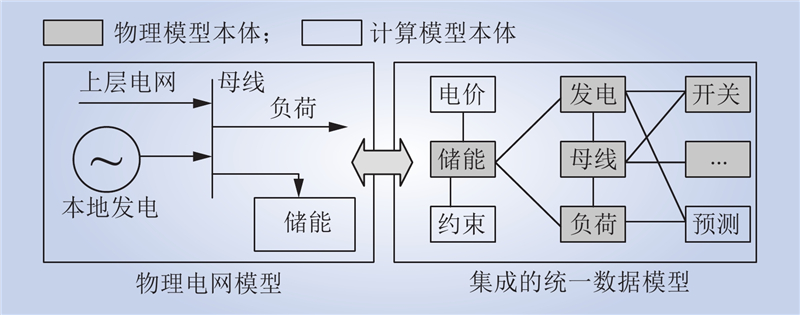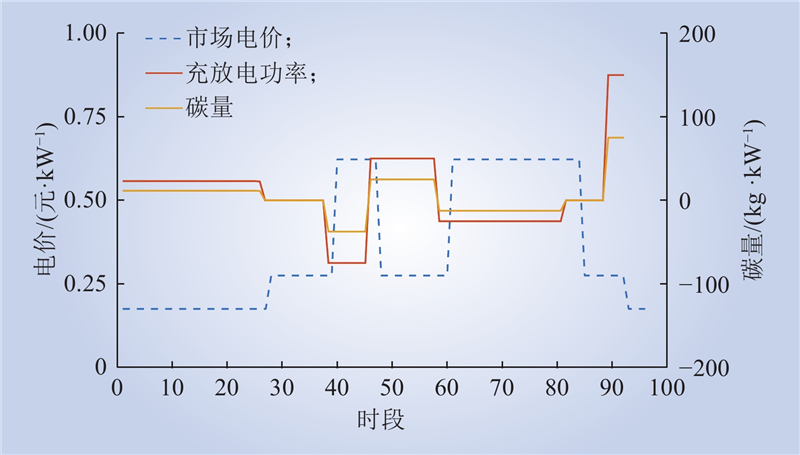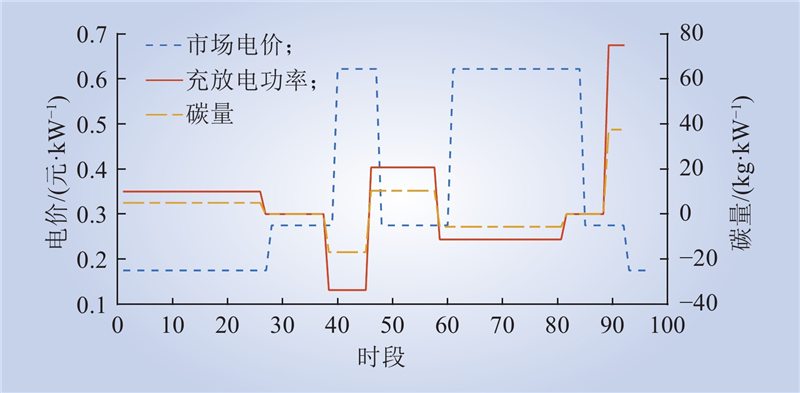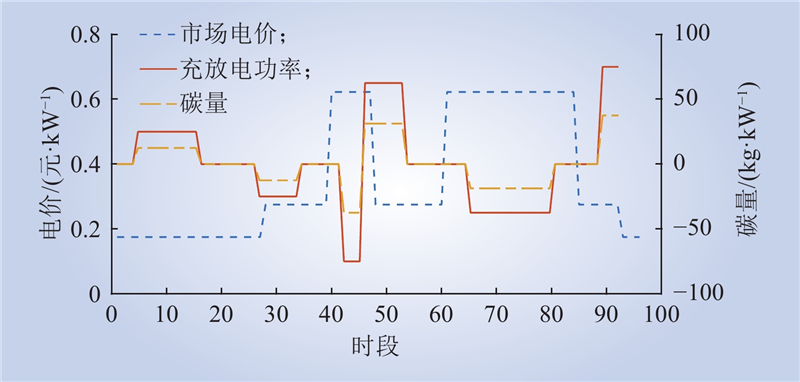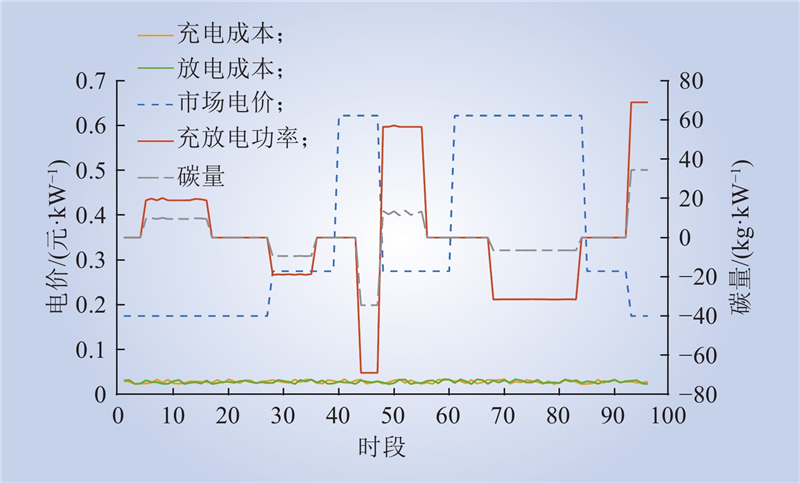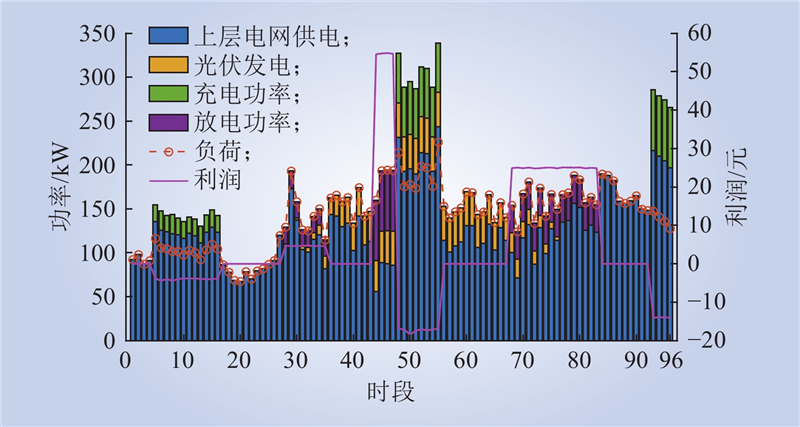| 1 |
TONG J L, LIU W S, MAO J B, et al. Role and development of thermal power units in new power systems[J]. IEEE Journal of Radio Frequency Identification, 2022, 6, 837- 841.
DOI
|
| 2 |
徐峰亮, 王克谦, 王文豪, 等. 计及激励型需求响应的低压配电网混合储能优化配置[J]. 中国电力, 2024, 57 (6): 90- 101.
DOI
|
|
XU Fengliang, WANG Keqian, WANG Wenhao, et al. Optimal allocation of hybrid energy storage in low-voltage distribution networks with incentive-based demand response[J]. Electric Power, 2024, 57 (6): 90- 101.
DOI
|
| 3 |
YANG Z Y, TEN C W, GINTER A. Extended enumeration of hypothesized substations outages incorporating overload implication[J]. IEEE Transactions on Smart Grid, 2018, 9 (6): 6929- 6938.
DOI
|
| 4 |
李毓烜, 汪泰安, 彭鹏, 等. 大型电池储能电站的集控技术研究[J]. 电力建设, 2023, 44 (7): 33- 40.
|
|
LI Yuxuan, WANG Taian, PENG Peng, et al. Research on cluster control of large battery storage power station[J]. Electric Power Construction, 2023, 44 (7): 33- 40.
|
| 5 |
杨贺钧, 王井寅, 马英浩, 等. 考虑功率互济的多区域电网储能系统联合优化配置[J]. 电力建设, 2024, 45 (2): 79- 89.
|
|
YANG Hejun, WANG Jingyin, MA Yinghao, et al. Joint planning of energy storage systems for multi-area grids considering power interconnection[J]. Electric Power Construction, 2024, 45 (2): 79- 89.
|
| 6 |
牛远方, 冯天橼, 王成福, 等. 兼顾经济效益与寿命损失的含储能配电网多时间尺度协调调度[J]. 电力建设, 2024, 45 (11): 89- 101.
|
|
NIU Yuanfang, FENG Tianyuan, WANG Chengfu, et al. Multi-time scale optimal dispatching method of active distribution network considering the influence of cycle life for energy storage system[J]. Electric Power Construction, 2024, 45 (11): 89- 101.
|
| 7 |
KARIMIANFARD H, SALEHIZADEH M R, SIANO P. Economic profit enhancement of a demand response aggregator through investment of large-scale energy storage systems[J]. CSEE Journal of Power and Energy Systems, 2022, 8 (5): 1468- 1476.
|
| 8 |
蒋棹骏, 向月, 谈竹奎, 等. 计及需求响应的高比例清洁能源园区储能容量优化配置[J]. 中国电力, 2023, 56 (12): 147- 155, 163.
|
|
JIANG Zhaojun, XIANG Yue, TAN Zhukui, et al. Optimal allocation of energy storage capacity in high proportion clean energy parks considering demand response[J]. Electric Power, 2023, 56 (12): 147- 155, 163.
|
| 9 |
ALAM M. Day-ahead electricity price forecasting and scheduling of energy storage in LMP market[J]. IEEE Access, 2019, 7, 165627- 165634.
DOI
|
| 10 |
齐彩娟, 陈宝生, 韦冬妮, 等. 考虑主从博弈定价模式的共享储能分布鲁棒优化配置方法研究[J]. 中国电力, 2024, 57 (7): 40- 53.
|
|
QI Caijuan, CHEN Baosheng, WEI Dongni, et al. Distributionally robust optimal configuration for shared energy storage based on Stackelberg game pricing model[J]. Electric Power, 2024, 57 (7): 40- 53.
|
| 11 |
郭子仪, 韩爽, 刘永前, 等. 基于风电场日前交易和日内交易的储能配置方法[J]. 电力建设, 2023, 44 (9): 34- 42.
|
|
GUO Ziyi, HAN Shuang, LIU Yongqian, et al. Energy-storage configuration methods based on day-ahead and intraday trading of wind farms[J]. Electric Power Construction, 2023, 44 (9): 34- 42.
|
| 12 |
ZOU P, CHEN Q X, XIA Q, et al. Evaluating the contribution of energy storages to support large-scale renewable generation in joint energy and ancillary service markets[J]. IEEE Transactions on Sustainable Energy, 2016, 7 (2): 808- 818.
DOI
|
| 13 |
胡亚春, 窦震海, 张志一, 等. 基于分布鲁棒和改进纳什谈判的多微网-共享储能运行优化策略[J]. 电力建设, 2024, 45 (7): 100- 112.
|
|
HU Yachun, DOU Zhenhai, ZHANG Zhiyi, et al. Multi-microgrid and shared energy storage operation optimization strategy based on distributionally robust and improved Nash bargaining[J]. Electric Power Construction, 2024, 45 (7): 100- 112.
|
| 14 |
FANG X, HODGE B M, BAI L Q, et al. Mean-variance optimization-based energy storage scheduling considering day-ahead and real-time LMP uncertainties[J]. IEEE Transactions on Power Systems, 2018, 33 (6): 7292- 7295.
DOI
|
| 15 |
高明非, 韩中合, 赵斌, 等. 区域综合能源系统多类型储能协同优化与运行策略[J]. 中国电力, 2024, 57 (9): 205- 216.
|
|
GAO Mingfei, HAN Zhonghe, ZHAO Bin, et al. Coordinated optimization and operational strategy for multi-type energy storage in regional integrated energy systems[J]. Electric Power, 2024, 57 (9): 205- 216.
|
| 16 |
仪忠凯, 侯朗博, 徐英, 等. 市场环境下灵活性资源虚拟电厂聚合调控关键技术综述[J]. 中国电力, 2024, 57 (12): 82- 96.
|
|
YI Zhongkai, HOU Langbo, XU Ying, et al. Aggregation and operation key technology of virtual power plant with flexible resources in electricity market environment: review[J]. Electric Power, 2024, 57 (12): 82- 96.
|
| 17 |
高建伟, 黄宁泊, 高芳杰, 等. 基于改进信息间隙决策理论的考虑决策者风险态度的社区虚拟电厂经济-能源-环境调度策略选择[J]. 电力建设, 2024, 45 (3): 39- 57.
|
|
GAO Jianwei, HUANG Ningbo, GAO Fangjie, et al. Selection of economics-energy-environment scheduling strategy for a community virtual power plant considering decision-makers' risk attitudes based on improved information gap decision theory[J]. Electric Power Construction, 2024, 45 (3): 39- 57.
|
| 18 |
BADANJAK D, PANDŽIĆ H. Battery storage participation in reactive and proactive distribution-level flexibility markets[J]. IEEE Access, 2021, 9, 122322- 122334.
DOI
|
| 19 |
BYRNE R H, NGUYEN T A, COPP D A, et al. Energy management and optimization methods for grid energy storage systems[J]. IEEE Access, 2017, 6, 13231- 13260.
|
| 20 |
张志一, 窦震海, 于润泽, 等. 考虑电-热等效虚拟储能的综合能源系统低碳经济调度[J]. 电力建设, 2024, 45 (3): 16- 26.
|
|
ZHANG Zhiyi, DOU Zhenhai, YU Runze, et al. Low-carbon economic dispatch of integrated energy system considering electric-thermal equivalent virtual energy storage[J]. Electric Power Construction, 2024, 45 (3): 16- 26.
|
| 21 |
LI Y B, CHENG H H, LIN Z M, et al. Multi-objective optimization scheduling problem of VPP on generation side and demand side based on Time-of-use electricity price[C]//2022 4th International Conference on Electrical Engineering and Control Technologies (CEECT). Shanghai, China. IEEE, 2022: 494–498.
|
| 22 |
MOHY-UD-DIN G, MUTTAQI K M, SUTANTO D. A cooperative energy transaction model for VPP integrated renewable energy hubs in deregulated electricity markets[J]. IEEE Transactions on Industry Applications, 2022, 58 (6): 7776- 7791.
DOI
|
| 23 |
郁海彬, 董帅, 陆增洁, 等. 新型电力系统下储能参与电力调峰调频辅助市场的竞标策略[J]. 中国电力, 2023, 56 (8): 48- 60.
|
|
YU Haibin, DONG Shuai, LU Zengjie, et al. Bidding strategy of energy storage participating in the auxiliary market of peak and frequency modulation in new power system[J]. Electric Power, 2023, 56 (8): 48- 60.
|
| 24 |
彭纪权, 金晨曦, 陈学通, 等. 我国电力市场与全国碳排放权交易市场交互机制研究[J]. 中国能源, 2020, 42 (9): 20- 24, 47.
DOI
|
|
PENG Jiquan, JIN Chenxi, CHEN Xuetong, et al. Research on interaction mechanism between electricity market and national carbon market of China[J]. Energy of China, 2020, 42 (9): 20- 24, 47.
DOI
|
| 25 |
刘广一, 王继业, 汤亚宸, 等. 电网碳排放因子研究方向与应用需求的演变进程[J]. 电网技术, 2024, 48 (1): 12- 28.
|
|
LIU Guangyi, WANG Jiye, TANG Yachen, et al. Evolution process of research directions and application requirements of electricity carbon emission factors[J]. Power System Technology, 2024, 48 (1): 12- 28.
|
| 26 |
TANG Y C, WU X P, ZHOU C L, et al. Automatic schema construction of electrical graph data platform based on multi-source relational data models[J]. Data & Knowledge Engineering, 2023, 145, 102129.
|
| 27 |
中华人民共和国生态环境部. 2021、2022年度全国碳排放权交易配额总量设定与分配实施方案(发电行业)[R]. 北京: 中华人民共和国生态环境部, 2022.
|
| 28 |
ADNAN A. Adapting market design to high shares of variable renewable energy[R]. International Renewable Energy Agency, 2017: 1–166.
|
| 29 |
BANKS J P. The decarbonization transition and U. S. electricity markets: impacts and innovations[J]. WIREs Energy and Environment, 2022, 11 (6): 1- 31.
|
| 30 |
路轶, 汤亚宸, 刘广一, 等. 基于 “电网一张图” 的时空数据管理系统[J]. 供用电, 2019, 36 (11): 12- 19.
|
|
LU Yi, TANG Yachen, LIU Guangyi, et al. Spatiotemporal data management system based on "one graph of power grid"[J]. Distribution & Utilization, 2019, 36 (11): 12- 19.
|



